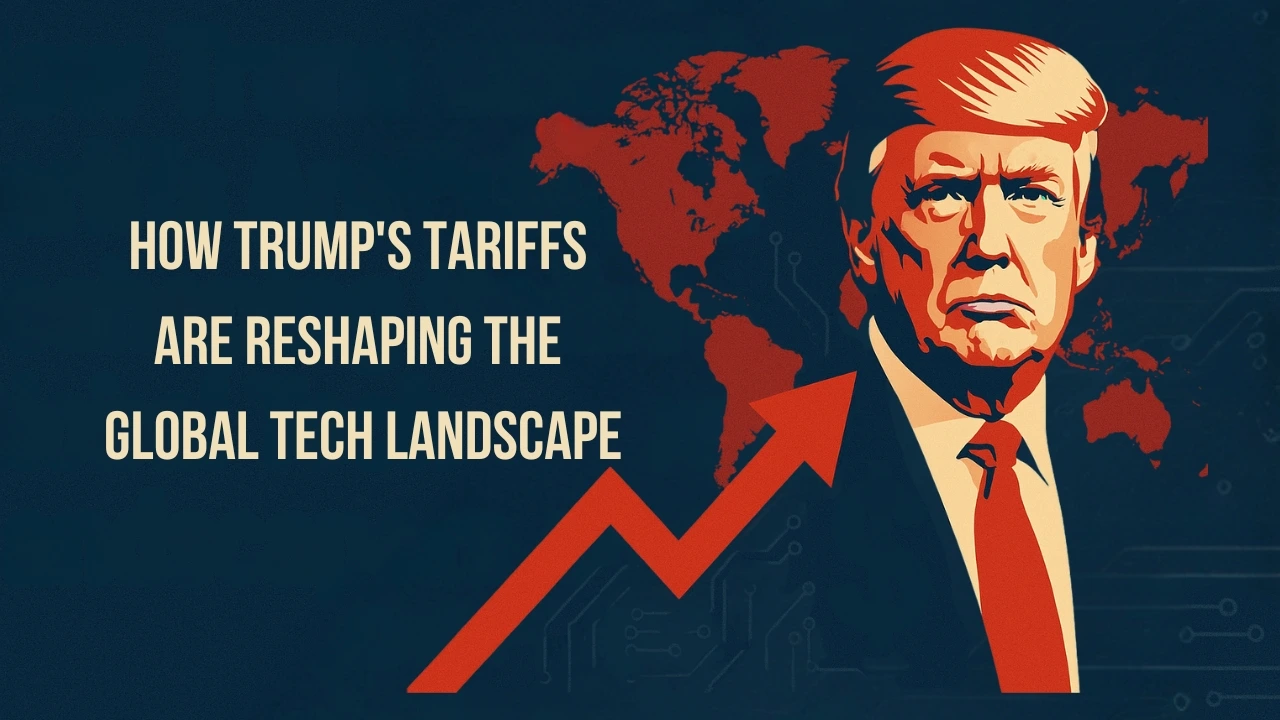How Trump’s Tariffs Are Reshaping the Global Tech Landscape is a question that’s echoing through boardrooms, factories, and trade summits worldwide. What began as a strategy aimed at rebalancing trade deficits and protecting American manufacturing has evolved into a policy with sweeping consequences far beyond U.S. borders. While tariffs have long been a tool of economic leverage, their recent use by former President Donald Trump—and now potentially reinvigorated by ongoing policy discussions—has particularly rattled the global tech industry.
Back when Trump first introduced tariffs on Chinese goods, few predicted the level of disruption it would cause in such a short span. At the heart of it was a desire to bring tech manufacturing back to American soil, encourage local innovation, and cut reliance on foreign supply chains. But in practice, the effect has been a dramatic realignment of where, how, and by whom tech products are made. How Trump’s Tariffs Are Reshaping the Global Tech Landscape isn’t just about taxes and trade—it’s about the tectonic shifts in how the digital world gets built.
For instance, the mobile industry. Tariffs are imposed on essential components like screen displays, semiconductors, and batteries made in China. Major players such as Apple, Samsung, and Google are forced to reconsider their sources of supply. Apple is a major player, but was previously heavily dependent on Chinese production lines, and is now diversifying to India as well as Vietnam. This isn’t just a financial move but also strategic in trying to lower geopolitical risks. And Apple isn’t alone—countless tech companies are now exploring Southeast Asia and even Mexico as alternative manufacturing hubs.
This shift, of course, has downstream effects. Countries like Vietnam have seen a tech boom, with foreign investments pouring into infrastructure, logistics, and labor training. On the flip side, some Chinese tech manufacturers have experienced slowdowns or been forced to pivot toward domestic demand. The broader ripple effect is undeniable. How Trump’s Tariffs Are Reshaping the Global Tech Landscape can also be seen in the rise of regional tech clusters outside of traditional powerhouses.
But it’s not just hardware. Software companies are feeling the pressure too. The tariffs have caused uncertainty about the accessibility of software development as well as cloud infrastructure components and the most basic IT services, particularly for those with small budgets. Due to the increased costs and uncertain laws, many companies hesitate to expand globally or delay the introduction of new products. As a result, President Trump’s trade policies affected the timing of innovations.
American consumers haven’t been left out either. Due to tariffs that have pushed up costs for imports and everything from gaming consoles to laptops is either increasing or stagnating, and is putting stress on households’ budgets. For companies that choose not to absorb the costs to their customers, profits have been impacted. It’s a delicate balance—raising prices risks losing customers, while absorbing costs can strain already thin tech budgets.
But it’s not everything bad. Some U.S.-based technology companies, the tariffs have provided a competitive advantage. Since foreign-made goods are becoming costly, American-made products are being viewed with a different perspective by American buyers. In niche sectors like advanced robotics and cybersecurity hardware, local companies are reporting increased demand and a stronger foothold in the market.
The effects even stretch into education and workforce development. Tech companies, responding to evolving manufacturing needs, are collaborating with universities and vocational schools to train a new generation of American tech workers. Demand for skilled work in AI robotics, robotics, as well as semiconductor engineering, is on the rise and presents opportunities, but the evidence of a skills gap that needs to be addressed.
But the implications on geopolitics remain unclear. A few see Trump’s policies on trade as an important step towards an economically independent pursuit, and others are concerned about the rising tensions in trade. The U.S.-China tech cold war is very real, and tariffs are just one front in a broader strategic conflict that includes intellectual property, cybersecurity, and global influence.
The result, How Trump’s Tariffs Are Changing The Global Tech Landscape, isn’t a short-term story, but an ongoing one. If future administrations follow the same route or change track, the fundamental changes that have already been set in motion are expected to last. Manufacturing, supply chains, the labor market, and the way we shop are changing on a daily basis.
The global tech community is learning to adapt, but also to anticipate. It’s clear that In a time in which economic policies can change at the touch of a pencil, resiliency and agility have become necessary. They’re the norm. When the dust has settled, it’s becoming evident that the tariffs haven’t only transformed the way business operates, they’ve transformed what the future of tech could appear to be.

